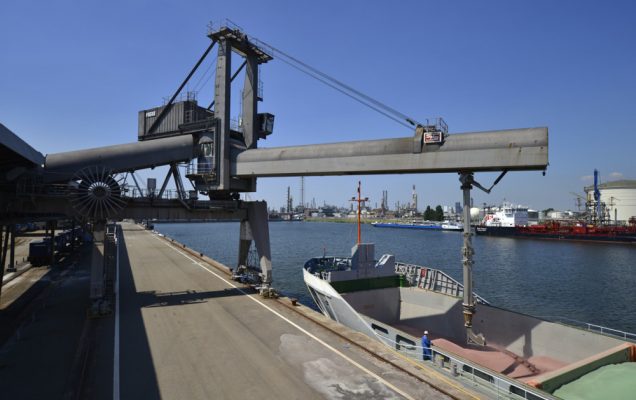
Emissions reductions
Working to reduce emissions at our plants worldwide
Our mineral extraction, manufacturing and distribution activities result in a variety of emissions to the air. These include sulphur oxides, carbon monoxide, nitrogen oxides, ammonia, particulates and hydrocarbons. Air quality around our production facilities is continuously monitored – and we share this data with regulatory authorities and the local community.
In 2018, Group operations generated an average of 0.82 kg of air emissions per tonne of production, up from the 0.77 kg per tonne of production emitted in 2017.
This was due to a higher generation of overburden, which is a result of a wall flattering of a magnetite-apatite and apatite-staffelite ore mined at Kovdor.
Implementing energy efficiency and emissions reduction measures
In line with industry efforts to address climate change, we also continue to implement energy efficiency and GHG reduction measures across our operations. One significant example in 2018 was the launch of food-grade carbon dioxide production in Russia. The US$7.5 million facility captures the 32,000 tonnes of CO2 produced each year at our Nevinnomyssk nitrogen plant and processes it using state-of-the-art purification technology.
The CO2, which would otherwise be released into the atmosphere, is supplied primarily to the carbonated drinks sector. It is also used in a range of other industrial applications, including the manufacture of dry ice, in greenhouse plant nutrition and as a fire suppressant.
Upgrades to our phosphates plants at Lifosa, Phosphorit, and Belorechensk saw the introduction of heat recuperation technology. This limits the release of water vapor and enables heat produced in the production of sulphuric acid to be recycled, warming the plants themselves. At Lifosa, for instance, about 100,000 MWh of the heat energy can be supplied to the city of Kedainiai and about 250 m kWh of electricity can be produced. During the year we used an estimated 111.4 kWh/t of energy compared to 113.1 kWh/t in 2017.
Greenhouse gas (GHG) emissions reduction at EuroChem Antwerpen
A key tool in achieving the European Union’s 2020 Climate and Energy targets is the EU Emission Trading System (ETS). This covers 45% of EU GHG emissions from large facilities in the power, industry and aviation sectors, with a target of 21% emissions reduction compared to 2005 levels.
Our Antwerp, Belgium plant is included in the ETS. We have invested in emissions reduction technologies and processes since it became part of EuroChem in 2012. Our GHG emissions consist of N2O from nitric acid production and CO2 from fertilizer manufacture.
Initially we were exceeding our targets and having to purchase CO2 allowances; however in the current ETS phase (which ends in 2020), we have moved to an ‘accumulated excess’ of allowances. Our process changes contributed to a substantial cut in emissions from 2012 to 2018. Emissions in 2018 were 204,490 tonnes of CO2, 47.8% of the 2012 level, maintaining a sub-50% average reduction in each of the past three years.
The main improvements in emissions were achieved through the operation of N2O abatement technologies in the nitric acid plants, ranging from a new reactor to minor modifications and improvements. We will continue to pursue reductions in GHG emissions up to 2020 and beyond.